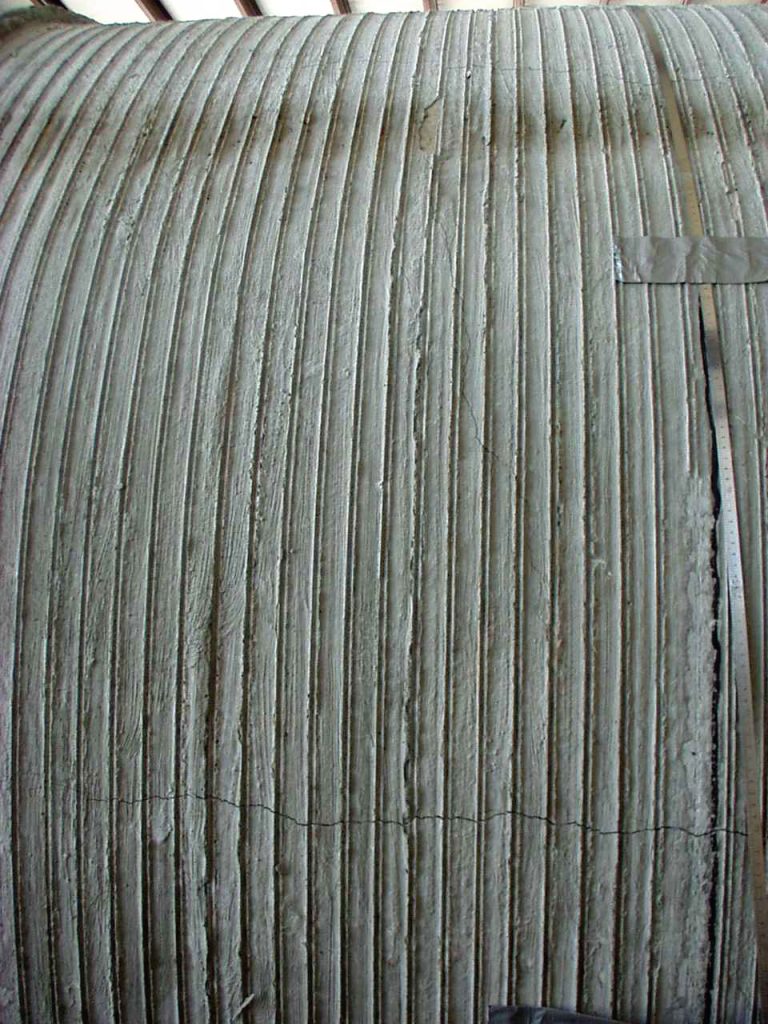Phased Excavation and External CFRP Repair of In-Service Severely Degraded Buried PCCP Pipes in an Environmentally Sensitive Area

The 42 in. diameter prestressed concrete cylinder pipe (PCCP), lined cylinder (LCP) type, is a sewer force main that was constructed in 1976. Condition assessment of the pipeline using electromagnetic technology was performed in 2019. Based on the results of the condition assessment, the owner selected nine pipes to repair in 2022. The repair pipes are located on a shallow bend along the shore of a reservoir. The owner elected to repair the pipes with externally applied carbon fiber-reinforced polymer (CFRP) while the line remained in operation. The CFRP was designed following AWWA Standard C305—CFRP Renewal and Strengthening of PCCP. The CFRP was installed to lengths of pipe in phases to allow the line to remain in operation while providing full circumference access and limiting the potential for vertical and horizontal movements from longitudinal forces. Initial condition inspection identified that much of the pipe’s mortar coating and corroded prestressing wires spalled off during excavation, exposing the LCP steel cylinder. As excavation proceeded, spalling of mortar coating resulted in very short periods of minor leakage through the exposed and corroded steel cylinder, which was quickly contained and mitigated. Assessing the condition of the pipes, the owner elected to replace two pipe segments with ductile iron replacement pieces and to limit the continuous length of pipe exposed at one time. Field engineering support was provided throughout the CFRP repair construction. Based on the field conditions, surface preparation requirements and details at exposed steel cylinder and terminations were updated, and a phased excavation and pipe support strategy was implemented. This paper describes the approach to evaluating pipes based on the external conditions of the pipe, different methods utilized to stop the leaks in the active line, factors for surface preparations to consider for deteriorated steel, phased excavation and pipe support approach, and overall repair construction of the pipes.
Publisher
Pipelines 2023